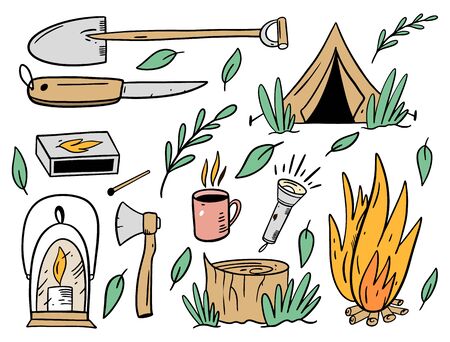Understanding Wild Camping Laws and Etiquette in the UK
Before heading out for a wild camp in Britain’s beloved landscapes, it’s vital to understand both the legal landscape and the cultural expectations. Wild camping regulations differ significantly across the UK’s nations. In Scotland, thanks to the Land Reform (Scotland) Act 2003, wild camping is largely permitted on most unenclosed land, provided you adhere to the Scottish Outdoor Access Code. This freedom comes with responsibility—campers must leave no trace and respect privacy, especially near homes or farmland. England and Wales are more restrictive: wild camping is generally not allowed without landowner permission, except in designated areas like parts of Dartmoor National Park (though recent legal challenges have complicated this), and some remote spots where it is tolerated if done discreetly. Wherever you pitch your tent, unwritten rules matter as much as statutory ones. Arrive late and leave early, keep group sizes small, avoid lighting fires, and take all rubbish home. Respect wildlife, minimise noise, and never camp too close to paths, water sources, or buildings. By blending legal awareness with considerate behaviour, you help preserve access for everyone while protecting our treasured wild spaces.
Choosing a Suitable Location
Finding the right spot is the cornerstone of a successful minimal impact wild camp in the UK. With diverse landscapes ranging from the rugged peaks of Snowdonia to the tranquil lochs of Scotland, your choice should balance adventure with responsibility. Here’s a practical guide to help you choose wisely:
Key Considerations for Site Selection
| Factor | Why It Matters | Best Practice |
|---|---|---|
| Remoteness | Reduces your visibility and impact on local communities and landowners. | Select locations away from popular footpaths, farms, and settlements. |
| Landscape Preservation | Protects fragile environments and ensures future access for all. | Avoid pitching on vulnerable ground such as peat bogs, wildflower meadows, or eroded areas. |
| Wildlife Disturbance | Minimises stress to animals and birds, especially during breeding seasons. | Steer clear of nesting sites, animal trails, and water sources frequented by wildlife. |
| Local Community Relations | Keeps wild camping welcome in cherished areas by respecting residents’ privacy and land rights. | Never camp within sight of houses or roads; always move on if asked by a landowner. |
The Legal Landscape in the UK
Laws around wild camping differ across the UK. In Scotland, responsible wild camping is permitted under the Scottish Outdoor Access Code. In England, Wales, and Northern Ireland, it is generally prohibited without landowner permission (with exceptions in some Dartmoor areas). Always research local bylaws before setting out.
Checklist for Minimal Impact Site Selection:
- Elevation: Camp at least 30 metres from lakes and streams to avoid polluting water sources.
- Group Size: Limit to small groups—large gatherings draw attention and increase damage risk.
- Pitches: Use established sites if available, but disperse tents if no obvious site exists to prevent ‘camping scars’.
- No Trace: Leave natural features unaltered—don’t move rocks or cut vegetation for comfort.
Cultural Sensitivity
The British countryside is not just wilderness—it’s a living landscape shaped by centuries of farming and community. Respect any signs of working land (gates, livestock, crops) and adhere to the Countryside Code: close gates behind you, keep noise low, and leave no trace. By planning ahead and choosing your location mindfully, you’ll contribute to preserving these much-loved spaces for everyone.

3. Packing Essentials for Minimal Impact
Minimising your footprint starts with what you bring, and thoughtful packing is the cornerstone of any responsible wild camp in the UK’s cherished landscapes. Here’s a checklist designed to balance comfort with sustainability, focusing on kit that keeps both you and nature in good nick.
Lightweight Shelter and Sleep System
Opt for a small, unobtrusive tent or bivvy bag in natural colours to blend with the landscape—remember, visibility isn’t always your friend when wild camping. Pair it with a compact, insulated sleeping mat and bag suitable for British weather, aiming for gear that packs down small and weighs little to reduce impact on paths and pitches.
Eco-Friendly Cooking Kit
A lightweight stove that runs on clean-burning fuel (like bioethanol or gas canisters) is preferable over campfires, which are discouraged in most UK wild spaces due to fire risk. Use reusable cookware, cutlery, and a collapsible washing-up bowl. Bring a refillable water bottle and purification method such as a filter or tablets—this limits single-use plastics and helps you drink safely from streams without depleting local supplies.
Sustainable Clothing Choices
Layering is key in the UK’s unpredictable weather: choose merino wool or recycled synthetic fabrics for base layers—they’re durable, quick-drying, and less likely to shed harmful microfibres than standard synthetics. Always pack waterproofs; look for brands committed to non-toxic DWR (durable water repellent) finishes.
Low-Impact Hygiene Supplies
Select biodegradable soap, a small trowel for digging catholes at least 30 metres from water sources, and pack out all used toilet paper in sealable bags. A microfibre towel is compact and dries fast, while solid shampoo bars cut down on plastic waste.
Minimal Waste & Responsible Storage
All food should be portioned into reusable containers or beeswax wraps to avoid excess packaging. Bring enough sturdy rubbish bags to carry out all litter—including any you find along the way—and consider a small mesh bag for picking up stray bits of micro-litter from the site.
Navigation & Safety
A paper OS map and compass are essential back-ups even if you use a GPS app—batteries run flat quickly in remote areas. Pack a head torch with rechargeable batteries, a basic first aid kit with eco-friendly plasters where possible, and ensure your mobile phone is fully charged before setting off.
Packing light is not just about comfort—it means you’re less likely to stray off established paths or damage fragile ground when setting up camp. Choose gear that lasts, repairs easily, and is made by companies who care about their environmental impact. This approach supports both your adventure and the future health of the UK’s wild spaces.
4. Leave No Trace Principles in Practice
Wild camping in the UK’s cherished natural spaces comes with a responsibility to protect them for future generations. The Leave No Trace principles offer a practical framework for reducing your environmental footprint and ensuring your wild camp remains invisible to others. Here are some actionable steps you can take:
Waste Management: Pack It In, Pack It Out
One of the most important aspects of minimal impact camping is effective waste management. Always take all rubbish home with you, including food scraps and biodegradable items, as these can disrupt local ecosystems. Use reusable containers to minimise single-use plastics and consider carrying a small bag specifically for litter you might find on site.
Waste Disposal Guidance Table
| Type of Waste | Action Required |
|---|---|
| Food Wrappers & Packaging | Take home and dispose of in recycling or general waste bins |
| Biodegradable Food Waste | Pack out; do not bury or scatter |
| Toilet Paper & Hygiene Products | Bag up and carry out; use unscented, biodegradable options if possible |
| Human Waste (in remote areas) | Bury 15-20cm deep, at least 50m from water sources, or use portable toilet bags |
Protecting Habitats: Tread Lightly and Camp Responsibly
Avoid disturbing vegetation and wildlife by selecting durable surfaces like grass or bare earth for pitching your tent. Refrain from moving stones or logs unnecessarily, as these are often home to insects and small animals. Stick to existing paths when walking around your campsite to reduce soil erosion and habitat damage.
Preserving Tranquillity: Respecting Others and the Environment
The unique sense of peace found in the UK’s wild places is part of what makes them so special. Keep noise to a minimum—avoid loud music or shouting, especially at night. If you encounter other campers or walkers, give them space and privacy. Remember that fires are generally discouraged due to their lasting impact; use a camping stove instead for cooking.
Quick Reference: Minimal Impact Checklist
- Leave no trace of your visit—remove all rubbish and signs of campfires or shelters.
- Avoid damaging plants, trees, and wildlife habitats.
- Campsites should be left exactly as you found them—or better.
- Minimise noise pollution to maintain the natural atmosphere.
- Be mindful of water sources; never wash directly in streams or tarns.
By applying these Leave No Trace principles thoughtfully, you help ensure that the UK’s beloved wild spaces remain unspoilt havens for everyone who follows in your footsteps.
5. Respecting Local Wildlife and Flora
One of the most rewarding aspects of wild camping in the UK is immersing yourself in its rich biodiversity, from rare upland birds to delicate wildflowers. To ensure these precious environments remain for future generations, it’s vital to act responsibly around wildlife and plant life.
Understanding Seasonal Sensitivities
Different species have different needs depending on the time of year. For example, ground-nesting birds such as curlews or skylarks are especially vulnerable during spring and early summer. Stick to established paths during this period to avoid disturbing nests, and consider alternative routes if you notice signs warning of sensitive habitats.
Minimising Disturbance
Keep noise to a minimum and observe wildlife from a respectful distance—binoculars are your friend here. Never feed wild animals, as this can disrupt natural behaviours and create dependency. If you encounter livestock, leave gates as you find them and give animals plenty of space, particularly during lambing season.
Protecting Rare and Sensitive Habitats
The UK boasts unique habitats like peat bogs, heather moorland, and ancient woodlands—each playing a crucial role in supporting biodiversity and combating climate change. Avoid trampling on sensitive vegetation by pitching tents on durable surfaces such as grass or bare earth where possible. Take special care not to disturb mosses, lichens, or fragile alpine plants found at higher elevations.
Leave No Trace with Flora
Never pick wildflowers or remove plants, even if they seem abundant. Some species are legally protected, and all play a part in local ecosystems. When washing up or disposing of water, do so at least 30 metres away from watercourses to prevent pollution and harm to aquatic life.
By taking these steps, you’ll help ensure that wild spaces remain havens for wildlife and fellow adventurers alike—striking the balance between access and preservation that underpins responsible wild camping across the UK.
6. Engaging with Local Communities and Landowners
Building positive relationships with local communities and landowners is a cornerstone of responsible wild camping in the UK’s cherished wild spaces. Respecting those who live and work in these areas not only ensures your own trip runs smoothly, but also helps to maintain access for future campers.
Seeking Permission and Communication
Wild camping laws differ across the UK, with Scotland generally allowing more freedom under the Scottish Outdoor Access Code, while in England, Wales, and Northern Ireland, it’s often necessary to seek permission from landowners. Always research your chosen area beforehand; where explicit permission is required, approach landowners courteously—either by phone, email, or in person. Explain your intentions clearly: outline how many people are in your group, the duration of your stay, and your commitment to leaving no trace.
Respectful Interaction with Locals
If you encounter residents or workers during your camp, a friendly greeting goes a long way. Be open about your plans and receptive to any advice or requests they may have. Supporting local shops or cafes before or after your adventure can also foster goodwill and demonstrate appreciation for the community.
Understanding Your Responsibilities
As a visitor, you’re an ambassador for all wild campers. Stick to established paths when arriving at your site, avoid disturbing livestock or crops, and keep noise to a minimum—especially at night. If you’re asked to move on by a landowner or local authority, do so promptly and respectfully. Remember that negative encounters can impact access rights for everyone.
Nurturing respectful relationships with both locals and landowners not only protects the places we love but also enriches your own wild camping experience through positive connections and local knowledge.
7. Planning Your Departure and Journey Home
Leaving a wild camp site in the UK’s cherished wild spaces requires the same care and respect as arriving. As your adventure draws to a close, it’s essential to ensure that your presence remains invisible to future visitors and wildlife alike. This final stage of your trip is just as important as the planning that went into your arrival.
Leave No Trace: The Final Sweep
Before you pack up, conduct a thorough sweep of your pitch. Walk the area in widening circles, scanning for any stray tent pegs, micro-litter, or gear that may have been overlooked. Pick up every scrap, no matter how small—even biodegradable items like fruit peels should be packed out, as they can harm local wildlife and disrupt natural ecosystems.
Restoring the Site
If you moved rocks or logs or flattened grass, do your best to restore them to their original position. Brush away footprints and re-scatter any leaf litter or twigs you may have disturbed. If you used a camping stove, ensure there are no scorch marks; if you followed the rare exception of having a fire (where it is permitted), dismantle fire rings and disperse ashes so that there’s no visible sign of a campfire.
Responsible Waste Disposal
Pack all rubbish and waste with you—including used toilet paper and hygiene products—in sturdy bags to be disposed of at home or at appropriate facilities en route. Never leave waste in bins at remote locations, as these often overflow and attract wildlife.
The Journey Home: Minimising Impact Beyond Camp
Your minimal impact ethos doesn’t end when you shoulder your rucksack. Stick to established paths on your way out to prevent further erosion or damage to fragile habitats. If using public transport, check schedules ahead of time to avoid unnecessary waiting around or disruption to small rural communities. If driving, share lifts where possible to reduce your carbon footprint.
Reflect and Share Responsibly
Once home, take a moment to reflect on what worked well and what could be improved for next time—this iterative mindset is central to low-impact adventuring. When sharing your experience online or with friends, consider omitting exact locations for sensitive sites, promoting responsible wild camping rather than encouraging overcrowding.
By planning your departure with care and travelling home thoughtfully, you help preserve the magic of the UKs most loved wild spaces for generations of campers yet to come.


